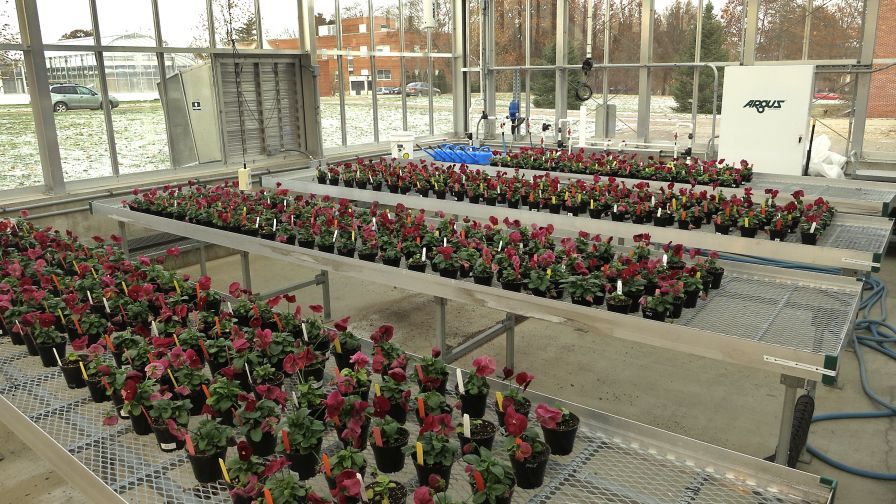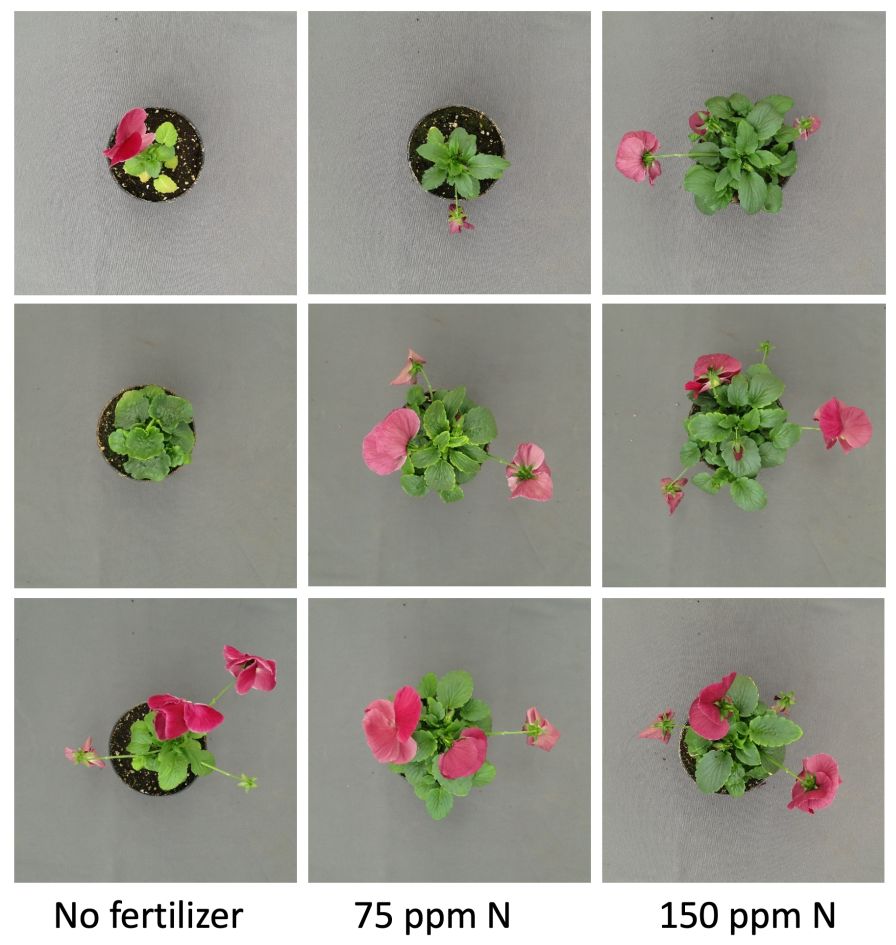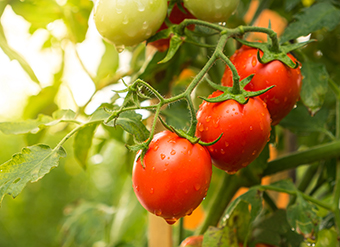The Relationship Between Biostimulants and the Growing Environment

Biostimulants can improve plant access to soil nutrients, and nutrient use and uptake efficiencies are enhanced. Photo: Michelle Jones
Editor’s note: This is the first part a monthly three-part series we are launching on the efficacy of biostimulants in the greenhouse. Special thanks to Ohio State’s Michelle Jones for compiling the information from a panel she led at Cultivate’21. Watch for Part 2 in late April.
Biostimulants are designed to enhance or benefit nutrient uptake, nutrient efficiency, tolerance to abiotic stress, crop quality, and yield in plants. But how do biostimulants perform in different greenhouse environments?
Dr. Michelle Jones, The Ohio State University DC Kiplinger Floriculture Chair, and a panel of industry experts addressed this and other questions during a discussion at Cultivate’21. The panel included Mark Freeman (Bioworks), Matthew Krause (Lallemand Plant Care), Troy Buechel (Premier Tech), and Blair Busenbark (Mycorrhizal Applications).
Keep reading for highlights from the discussion.
How does the growing environment affect the efficacy of microbial biostimulants?
Krause: Living microbial biostimulants all have nutritional, moisture, salinity, pH, and environmental requirements and limits for their growth and activity. These are not necessarily universal among biostimulant microbes, even among those in the same microorganism species.
Freeman: The environment as well as fertilization practices can alter the efficacy of microbial biostimulants. Nitrogen and phosphorus application rates and sources have been studied extensively in combination with mycorrhizae. An important consideration, too, is that biostimulants can improve plant access to soil nutrients, so nutrient use and uptake efficiencies are enhanced. Studies have shown that various Bacillus, Trichoderma, Penicillium, and other soil microbes can help in this regard, especially if nutrients are limiting. Similarly, several microbes can help plants tolerate abiotic stresses such as drought and soil salinity, so the growing environment will affect how biostimulant efficacy is perceived. If existing fertilization practices provide everything the plant needs, for example, then the benefits of a biostimulant may not be obvious.
How long do mycorrhizae and non-mycorrhizal biostimulants last in the media? How long are they effective?
Krause: This depends on the microbe, especially at the species and strains levels. The plant response is affected by numerous factors, including the product’s formulation, the strain or strains of bacteria or fungi in the product, the status of the plant, the organic matter content and types in the growing media, competition from other microbes, chemical and nutritional factors, available moisture, and temperature. Most experienced producers and distributors of mycorrhizae and non-mycorrhizal biostimulants can advise growers about storage stability of their microorganism strains in growing media, as well as if and how often they will need to be re-applied on different crops under different growing conditions.
Busenbark: This is a complicated question, as each growing system will have a different answer. Most organisms are number, or quantity based. From a plant productivity benefit, fungi are less about the number as can be seen with mycorrhizal fungi where the quantity increases over time, while most of the other organisms decline over time. For most of these biostimulants, the application and benefits come from soil or media applications. There are many factors that influence the longevity, which includes this balance between the microbial biomass of the different organisms providing this mutually beneficial environment. The more this system moves toward this optimized microbial biomass balance between organisms, the longer the system can sustain populations. When these are out of balance, there will be differences between organisms and growing systems to support this sustainable level for any extended time. Fungi, including mycorrhizal fungi, are an important part in this balance and microbial biomass which provides this base to support the other organism’s environment.
Freeman: There are many non-microbial based products like those that include protein hydrolysates. The effects depend on the production systems. They may be consumed or utilized immediately whether applied as a foliar spray or drench, but the impact on the plant can still be longer lasting. While the product (or active ingredient) may not be lasting in the media, it can still have longer term benefits on the metabolism of the plant.
Buechel: In the products themselves, endomycorrhizal fungi inoculum is viable within its packaging for up to two years if the storage temperatures stay within 36°F to 80°F. Rapid temperature change is more detrimental to its viability vs. the actual temperature, up to a point. When endomycorrhizal fungi inoculum is incorporated into a growing medium, peat moss and other organic components act as an insulator, which slows the rate of temperature change. Therefore, our research shows viable spores of Glomus intraradices will maintain population up to two years within the growing medium, even if exposed to temperatures from well below freezing up to, but not exceeding, 110°F. If temperature exceeds 110°F, populations will decline over time.

Pansies either had no fertilizer applied during production, or fertilizer was applied as a constant liquid feed at rates of 75 or 150 ppm N from 15-5-15 (JR Peters). With the lower rate of 75 ppm N, enhanced growth and flowering can easily been seen in the plants treated with growth-promoting microbes, Bacillus, or mycorrhizae, while at the higher fertilizer rate of 150 ppm N, this difference is no longer observed. Photo: Laura Chapin, The Ohio State University
Are there data that confirms the colonization of beneficial microorganisms in peat-based media? How does all this relate to application timing?
Krause: The longevity and activity of beneficial microorganisms in growing media depend primarily on what type and amount of organic matter is present and if the specific organism can use that type of food source. If they can break down lignin, like many beneficial Trichoderma fungal strains, they can survive in media containing barks, coconut coir, and sphagnum peat, while most beneficial bacterial strains cannot utilize lignin as a food source, but can use cellulose and hemicellulose in bark- and light sphagnum peat-based media. In addition, some beneficial microbes can survive on organic matter provided by the crop itself, either from root exudates and root cell fragments or by growing symbiotically inside plant tissue. Once their food sources are depleted in growing media or along root systems, beneficial microbes either die (like Gram-negative bacteria) or go dormant, like beneficial Bacillus bacterial strains and many beneficial fungal strains. The survival of dormant beneficial microbes depends on their survival structures, the energy they have inside these structures to maintain them, and the presence of other microbes that could prey on them. As long as biostimulant microbes remain dormant in a growing medium, they are not likely to provide much direct benefit to the plant until they are “awake” and fully active again.
Freeman: Several spore-forming beneficial microbes – Trichoderma and Bacillus species for example – will survive in peat-based media for extended periods. The spores are the survival stages of these organisms and will remain viable in the absence of a plant host or other organic food source for some time. The duration will depend on how the media is stored; the cooler the medium, the longer spores will survive. Some Trichoderma can utilize (certain sources of) organic matter to grow or will even parasitize other fungi (including pathogens) in the medium. While spores can survive for extended periods, the level of colonization in the absence of a plant host will be limited. However, as spores remain viable in the growing medium, once plant roots are available, spore germination is stimulated, and root colonization (protection) will occur.
Application timing is important to ensure viable inoculum is in the growing medium when plants start to develop roots (seeds or unrooted cuttings). Some growers time their applications to coincide with rooting; others may pre-incorporate the microbe into the growing medium ahead of seeding or sticking. There are several studies that highlight the benefits that some organisms have on seed germination and root formation/development in unrooted vegetative cuttings, including woody plants. Use of Trichoderma harzianum, for example, at seeding or sticking has demonstrated these benefits. Even though the microbes will grow on and with the developing roots, reapplications after eight to 12 weeks (for T. harzianum) are generally recommended, especially at key times in the crop cycle, when plants are potted up for example, to ensure there is sufficient inoculum in the ‘new’ growing media to colonize and protect roots as they grow and develop.
Busenbark: All beneficial relationships between plants and organisms are not based on colonization of the plant. Many microbial organisms that cohabitate in the same region, including living on the roots, can be functionally independent of the plant. Mycorrhizal fungi are one of those organisms that truly colonizes and forms a mutually beneficial association with the plant. The plant controls the relationship functionality with mycorrhizal fungi, however, that is not necessarily true for other organisms. Mycorrhizal fungi are one of the most cited organisms in scientific literature, so there are plenty of references illustrating these plant associations within all types of growing systems. It is recognized that benefits from this association between plant and mycorrhizae are different between container controlled growing systems and field growing systems and are not comparable. The measurable performance from the addition of inoculum to these growing systems is based on the interactions and that is going to vary by organism, quantity, and the growing system influencers.










